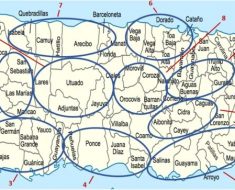The study covered in this summary was published on BioRxiv.org as a preprint and has not yet been peer reviewed.
Key Takeaway
-
Balance- and cognitive-related metrics of the cortical N1 response differed between individuals with or without Parkinson’s disease.
Why This Matters
-
This study is the first to report the association of a differential cortical N1 response in older adults with Parkinson’s disease.
Study Design
-
Sixteen older adults with Parkinson’s disease (mean age 69 ±7, 4 female) and 19 older adults without Parkinson’s disease (mean age 71 ±6, 6 female) were included in the study.
-
Individuals with Parkinson’s disease participated in the study without dopamine medication, defined as a minimum of 12 hours after their last dose of dopaminergic medication.
-
Participants were screened for the following inclusion criteria: vision can be corrected to at least 20/40 with glasses, no history of stroke or other neurological condition (except for Parkinson’s disease), no musculoskeletal conditions or procedures that cause pain or limit mobility of the legs, ability to stand unassisted for at least 15 minutes, and cognitive ability to consent. Participants were excluded for prior experience on the perturbation platform, present cholinergic medications, or lack of neurologist’s approval to withhold dopaminergic medications.
-
The motor subscale of the International Parkinson and Movement Disorder Society’s Unified Parkinson’s Disease Rating Scale (MDS-UPDRS III) was used to assess the severity of motor impairment in participants with Parkinson’s disease.
-
Anticipatory postural control, reactive postural control, sensory orientation, and dynamic gait were assessed using the Mini-Balance Evaluation Systems Test, and balance confidence was measured using the Activities-Specific Balance Confidence (ABC) scale.
-
Mobility was assessed using the Timed Up and Go (TUG) test, global cognition was measured with the Montreal Cognitive Assessment (MoCA), cognitive set shifting ability score was measured utilizing the Trail Making Test, and education level of participants was self-reported.
-
EEG and electrooculography (EOG) data were collected during a series of 48 translational support-surface perturbations of unpredictable timing, direction, and magnitude delivered during quiet standing.
Key Results
-
The participant group with Parkinson’s disease had lower balance ability and balance confidence.
-
Cortical N1 responses were associated with different measures of balance and cognitive function for individuals with Parkinson’s disease.
-
Cortical N1 amplitudes were associated with higher balance confidence and lower cognitive set shifting ability for individuals without Parkinson’s disease.
-
Cortical N1 responses were similar in amplitude, latency, and peak width between Parkinson’s and control groups.
Limitations
-
Underlying neural sources were unable to be localized because of limited electrode set.
Disclosures
-
The study was funded by the National Institutes of Health (Eunice Kennedy Shriver National Institute of Child Health & Human Development grant number R01 HD46922; National Institute of Neurological Disorders and Stroke grant number P50 NS098685; and National Center for Advancing Translational Sciences grant number UL1 TR000424), the Fulton County Elder Health Scholarship (2015-2017), and the Zebrowitz Award (2018).
-
None of the authors disclosed any competing interests.
This is a summary of a preprint research study, “The cortical N1 response to balance perturbation is associated with balance and cognitive function in different ways between older adults with and without Parkinson’s disease,” written by Aiden M. Payne from the Department of Biomedical Engineering, Emory University and Georgia Tech, Atlanta, Georgia and colleagues on BioRxiv.org, provided to you by Medscape. This study has not yet been peer reviewed. The full text of the study can be found BioRxiv.org.
For more news, follow Medscape on Facebook, Twitter, Instagram, YouTube, and LinkedIn
Source: Read Full Article





